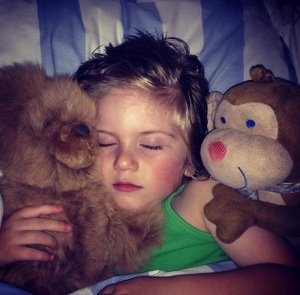
Nailing down a consistent nap schedule is often half the battle during a sleep training process. Naps can take 2-6 weeks to solidify and until then, there will be “good” nap days and “bad” nap days, this is all within the realm of normal.
The best thing we can do to get naps on the right track establishes the timing in which we put our child to sleep. Once the child has reached the “overtired state,” this is a good sign that we have missed the child’s sleep wave. As a result, the child will either put up a long battle before eventually going to sleep or the child will not fall asleep at all. Following “sleepy cues” and “overtired signs” will give us a good indicator on the time of morning or afternoon that your child is the sleepiest and the readiest for a nap.
How do I catch my child’s sleep wave?
Once we figure out how much wake time a child can handle, we will have a good idea on when we need to put that child down for their nap before we miss they become overtired. This can take a few days of experimenting, so be patient. After your baby has been awake for even just 30 minutes, I suggest taking out a piece of paper and writing down any “sleepy cues” that you see and noting the time in which you see them.
If you are not sure whether it is a cue or not, write it down anyway. Our goal is to begin our soothing routine promptly at the first sign of a sleep cue so that we catch the sleep wave right on time.
If during your soothing routine you see “overtired signs,” I suggest writing those down and noting the time as well. We can determine a great time frame by noting both “sleepy cues” and “overtired signs” each day until the nap schedule is solid.
What if my child doesn’t show “sleepy cues?”
Some children don’t show “sleepy cues” and instead go right to exhibiting “overtired signs.” These are the children that need to be watched even more vigilantly. Although their cues might be there, if they are not obvious, they are often easy to miss. In this case, we will use the clock more so than follow the child’s lead. This will take a few days of experimenting, but once we have a good idea of when we start to see overtired signs, we will know that we need to begin a soothing routine before we reach that time of day.
What if my child doesn’t seem tired at all?
It is very important to understand not to wait until it is obvious that your child is exhausted to begin attempting to put them down for a nap. Especially if your child does not show clear “sleepy cues.” Remember, the more tired the child is, the harder it is for them to fall asleep.
Personal Note: I can recall when I first went through the sleep training process with my son and I was reading him stories during our bedtime routine as he was crawling all over the room getting into everything he could. As soon as I picked him up and began the last step of the bedtime routine process, he would lay his head on my shoulder and be ready to go in his crib. There were times he was asleep before I reached for the door handle to leave his room.
When working with a client, I always give them the following chart in order to track “sleepy cues” and “overtired signs.” Most often when we see an overtired sign, we have missed the child’s sleep wave. Our mission is to begin soothing them at the very beginning of a child’s sleep wave so that they are on their way to finding sleep as soon as we lay them in their crib.
Use the chart below to find the perfect time to put your baby down for their nap!
Identifying Sleepy Cues
- Becoming drowsy
- Decreased activity
- Slower motions
- Less vocal
- Sucking is weaker or slower
- Quieter
- Calmer
- Appears disinterested in surrounding
- Eyes are less focused
- Eyelids drooping
- Yawning
- A lull in energy
Overtired Signs
- Fussing
- Rubbing eyes
- Irritable
- Cranky
- Tantrum/Meltdown
- Inability to entertain themselves
